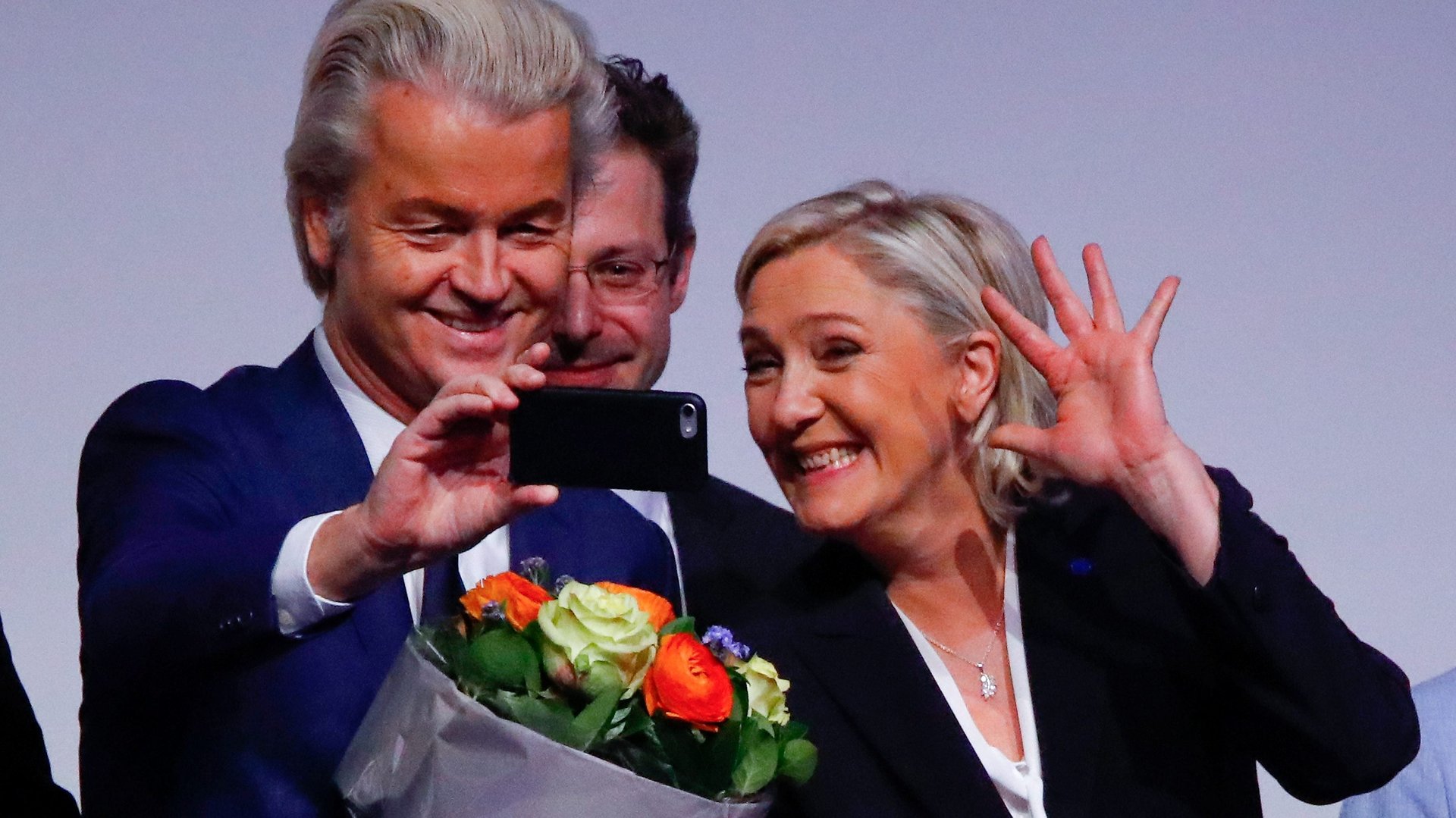Far-right parties are exploiting a design flaw in coalition governments across Europe
Coalition governments have been a defining feature of European politics for decades. But this political tradition, long touted as more representative of a diverse electorate, has opened a back door for far right parties to dominate.


Coalition governments have been a defining feature of European politics for decades. But this political tradition, long touted as more representative of a diverse electorate, has opened a back door for far right parties to dominate.
Nowhere is this more apparent than in the Dutch election set to take place on March 15, where a record-breaking 81 parties have registered to compete. Polls suggest that 13 of those parties may get into parliament; eight are expected to win ten seats or more—a historic high, according to the think tank Centre for European Reform (CER).
Elections in the Netherlands will set the tone for ballots in France and in Germany this year that will determine whether the voter anger that prompted the U.K.’s Brexit vote and brought Donald Trump to the White House is reverberating across mainland Europe. Wilders, who wants to stop all Muslim immigration to the Netherlands, has praised Trump’s agenda, while Rutte said the Dutch have a chance to send a signal that halts the spread of populism.
Other European elections, notably those in France and Germany later this year, may take their cues from what happens in the Netherlands, where populist sentiment is running high. Geert Wilders, the head of the Dutch far-right Partij voor de Vrijheid (PVV) who was recently convicted of inciting hatred, is projected to win between 24 to 32 seats.
“Wilders benefits from today’s fragmented political landscape because it means that even if he only gets 1/6th of the vote, he could still end up as the largest party or the largest party in opposition,” says Rem Korteweg, a senior research fellow at CER.
If the PVV ends up as the largest party after the election, Wilders is still unlikely to form a government as many parties have refused to work with him. Those who oppose him will have to build a majority coalition with at least five parties to govern, a task Korteweg dubs as a “political Rubik’s cube,” since these parties would have little in common other than to thwart Wilders. What’s more, building this kind of coalition would be time-consuming, and because of its size the resulting coalition would be unstable and weak, risking fresh elections.
The threat of political gridlock and instability could boost Wilders’ populist message and win him enough votes to form a government.
A similar dynamic is underway in Italy, where the left abandoned former prime minister Matteo Renzi to form a new political party, the Progressive and Democratic Movement, to the likely benefit of the far right. In France, waffling on the left has given way to a contest between a centrist, Emmanuel Macron, who formed his own party—En Marche—in 2016, and the far-right National Front’s Marine Le Pen. If the left could unite and support the Socialist Party’s candidate Benoit Hamon, who is currently polling in fourth place, he could edge himself into the runoff. But with his party in disarray, Hamon has struggled to rally its members.
The number of parties winning more than 1% of the vote at European elections has risen from an average (paywall) of seven in the late 1980s to nine. Meanwhile, the share of the electorate the winning party claims has on average fallen from 37% to 31%.
Among the new parties to form in the Netherlands in 2014 were a handful of pro-immigrant parties and a flurry of far right parties, including Voor Nederland, which split from Wilders’ PVV, and GeenPeil, which has already punched above its weight in tipping EU politics toward populist policies.